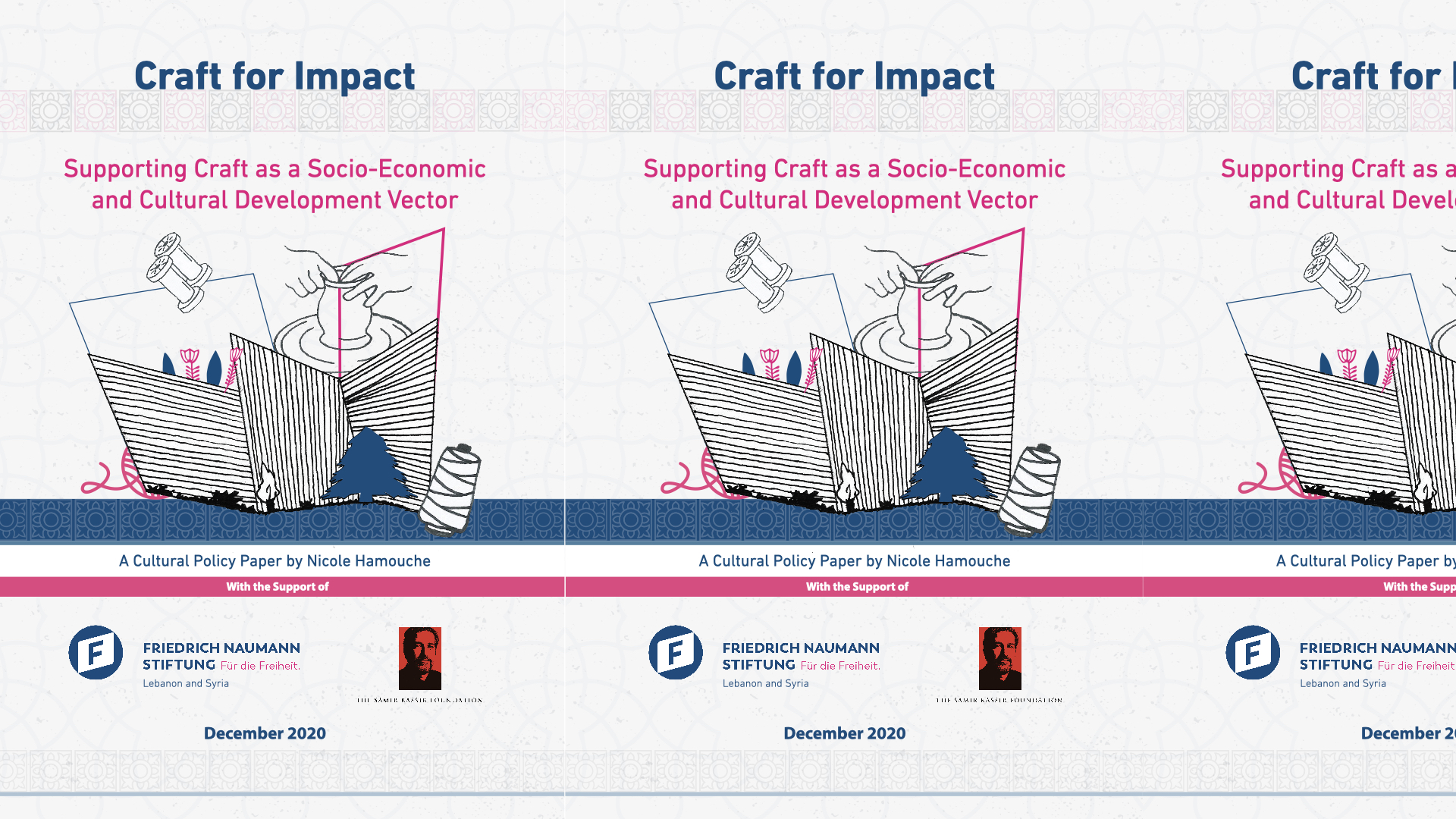Policy Paper
Supporting Craft as a Socio-Economic and Cultural Development Vector

Lebanon has a longstanding tradition of craft: weaving; embroidery and tapestry; glass wind blow- ing; wood and marquetry; coppersmithing; and more. In contemporary times, the sector has lost some of its erstwhile glory, as industrialization has shifted attention towards mass-produced items, which are also generally less expensive than their artisanal counterparts. Rapidly growing global markets meant that Lebanon was flooded with more affordable, modern products produced in places with cheap labor supply and production costs, such as India and China. The slow disap- pearance of craft is a threat, as this sector, which also conveys stories about communities, is a major component of heritage. In parallel to preserving heritage and transmission, craft in Lebanon has the potential to play a substantial role in the development of the economy. This is all the more true at a time when the country is experiencing an unprecedented financial and economic crisis, whereby imported products are no longer affordable for much of the local population, and the de facto capital controls make importing very complicated. Also, at a global level, recent years have seen a general trend towards returning to fair trade, ethical consumption, handicraft, and a demand for products that carry a story.
Crafts require low capital investment, and can be an important channel for job and revenue crea- tion, poverty alleviation, and economic growth, if given the adequate attention and managed and developed properly. Many initiatives have been undertaken to support the sector in the past; mostly funded by foreign organizations on a short-term basis; but these remained scattered and uncoordinated. A number of studies have also been published about the sector, leading to no further action. In the absence of a central public authority recognizing the importance of the sector and its economic and social value, and creating the momentum and a clear coherent environment for the industry, the chances of it reaching its potential are minimal. Categorized for years as part of the responsibilities of the Ministry of Social Affairs, its potential as a productive sector and factor of social cohesion was under-estimated and under-exploited. The preamble of the Lebanese Constitution recognizes that the balanced development of Lebanon’s regions on all levels; cultural, social, and economic; is an essential pillar of the unity of the State and its stability.
Lebanon has the framework, as well as the international affiliations, to enable it to capitalize on the craft sector’s potential. This framework, however, needs to be leveraged and better exploited. This paper examines the current status of Lebanese crafts, and the challenges the sector faces, and outlines suggestions for appropriate strategies and actions to develop it. We hope it may serve as a road map for reform-oriented decision-makers, should they prioritize policies that both improve social conditions and revive local heritage.